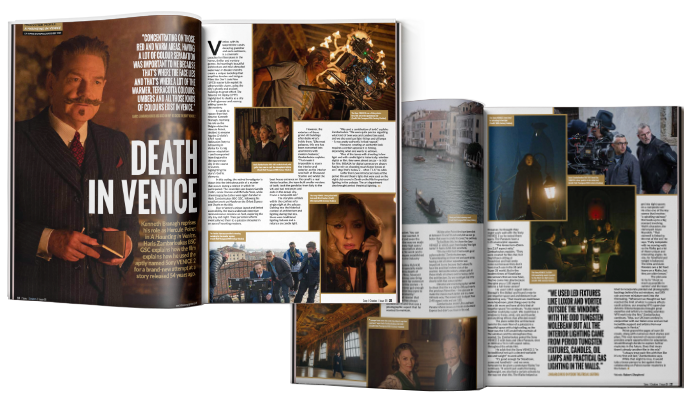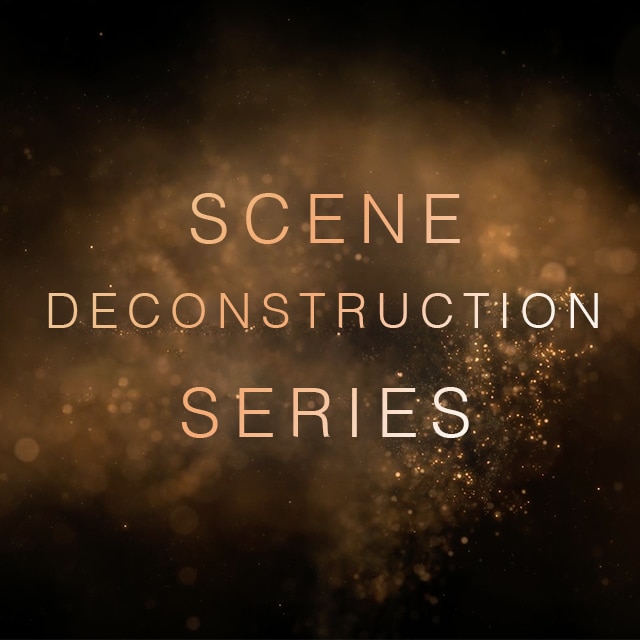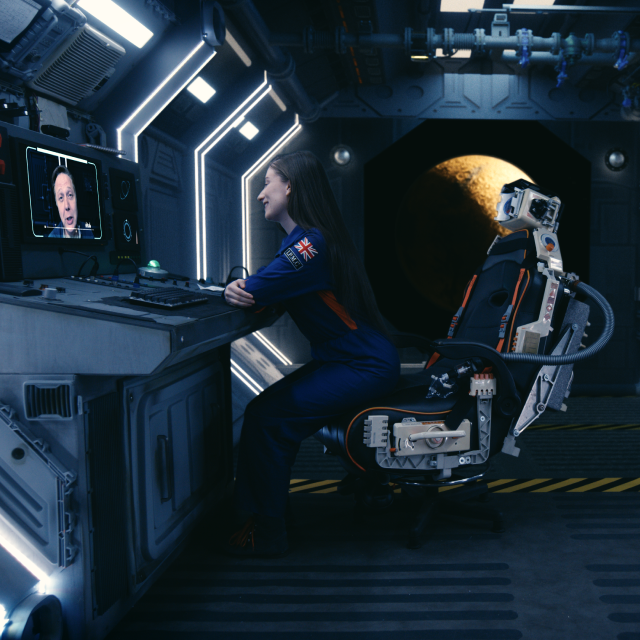
Bringing Beetlejuice Beetlejuice to life with VENICE 2
Behind-the-scenes with Haris Zambarloukos BSC, GSC
DoP Haris Zambarloukos, BSC, GSC was just 18 when Tim Burton’s iconic gothic comedy-horror film Beetlejuice opened in cinemas. It was just Burton’s second full-length film, but was a critical and commercial hit. Burton’s background as a stop-motion animator ensured a unique look with a quirky combination of live action, puppets, stop frame animation and practical effects.
With such a splashy performance, a sequel would seem inevitable, but it would take 36 years for it to arrive in cinemas. Filming began on Beetlejuice Beetlejuice in 2023 with many of the original film’s stars onboard, including Michael Keaton, Catherine O’Hara and Winona Ryder, plus newcomer Jenna Ortega.
Acclaimed DoP Haris Zambarloukos, felt a mixture of excitement and trepidation being invited to collaborate with Tim Burton on Beetlejuice, Beetlejuice.
Complete synchronicity
“Tim is a genius director and his impact on cinema, and I think culture is really impressive,” Haris says. “Everyone knows the score and the notes. But what really makes something stand out is the attitude of the person playing those notes. That attitude or feeling, I think, is the thing that you, as a cinematographer, have to understand from the director that is not in the script.”
Much of Tim Burton’s imaginary world was created through the design of the sets, the set dressing, prosthetics, costume and lighting. Wherever possible there was a preference for practical effects, using puppets and in-camera effects instead of CGI. The film used many completely new combinations of special effects techniques. One of the greatest challenges for Haris was to make sure that the multitude of effects seamlessly blended together in a coherent way.
“If you treat every single aspect as a performance, which is how Tim sees it… … …whether it’s a puppeteering performance or an actor performance or an in camera SFX… then they all have to be in complete synchronicity,” Haris emphasises. “So, I think in that respect part of the role of the cinematographer is to ensure that it’s all captured and that it’s all harmonious in such a way that nothing is lost.”
I really do like the colour aspect of the Sony VENICE 2, I think it's great at rendering colours.
Haris Zambarloukos, BSC, GSC
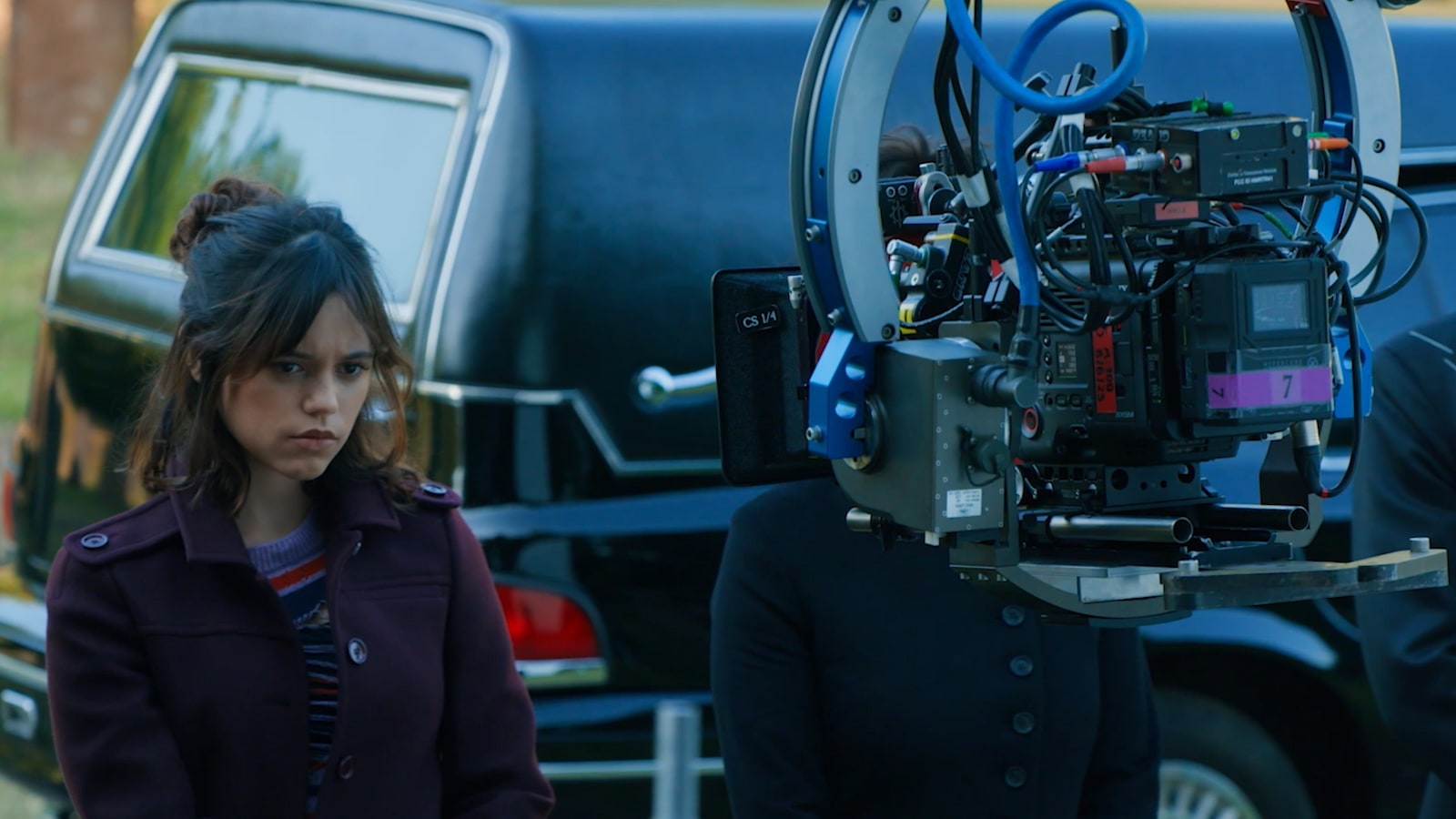
VENICE 2 Colour Science
To help achieve a magical, but cohesive look, Haris chose to shoot the film with a Sony VENICE 2 camera.
“I really do like the colour aspect of the Sony VENICE 2, I think it’s great at rendering colours,” Haris says.
Haris is no stranger to Sony’s VENICE 2 camera, having used it to shoot Kenneth Branagh’s A Haunting in Venice. And just as he did for that film, Haris chose to shoot using the camera’s full frame 8.6K 3:2 open gate scan mode with Panavison Ultra Panatars and Ultra Panatar II lenses.
The Ultra Panatars are older 1.3x anamorphic lenses that use cylindrical elements for focussing, which give a really unique look. Originally designed for film, when used with VENICE 2’s 3:2 mode, the final aspect ratio is 1.85:1.
“Tim has always loved 1.85 over 2.40,” Haris says. “I started using 1.85 again on Belfast and really fell in love with it again, then I used it on Haunting in Venice and it just felt appropriate.”

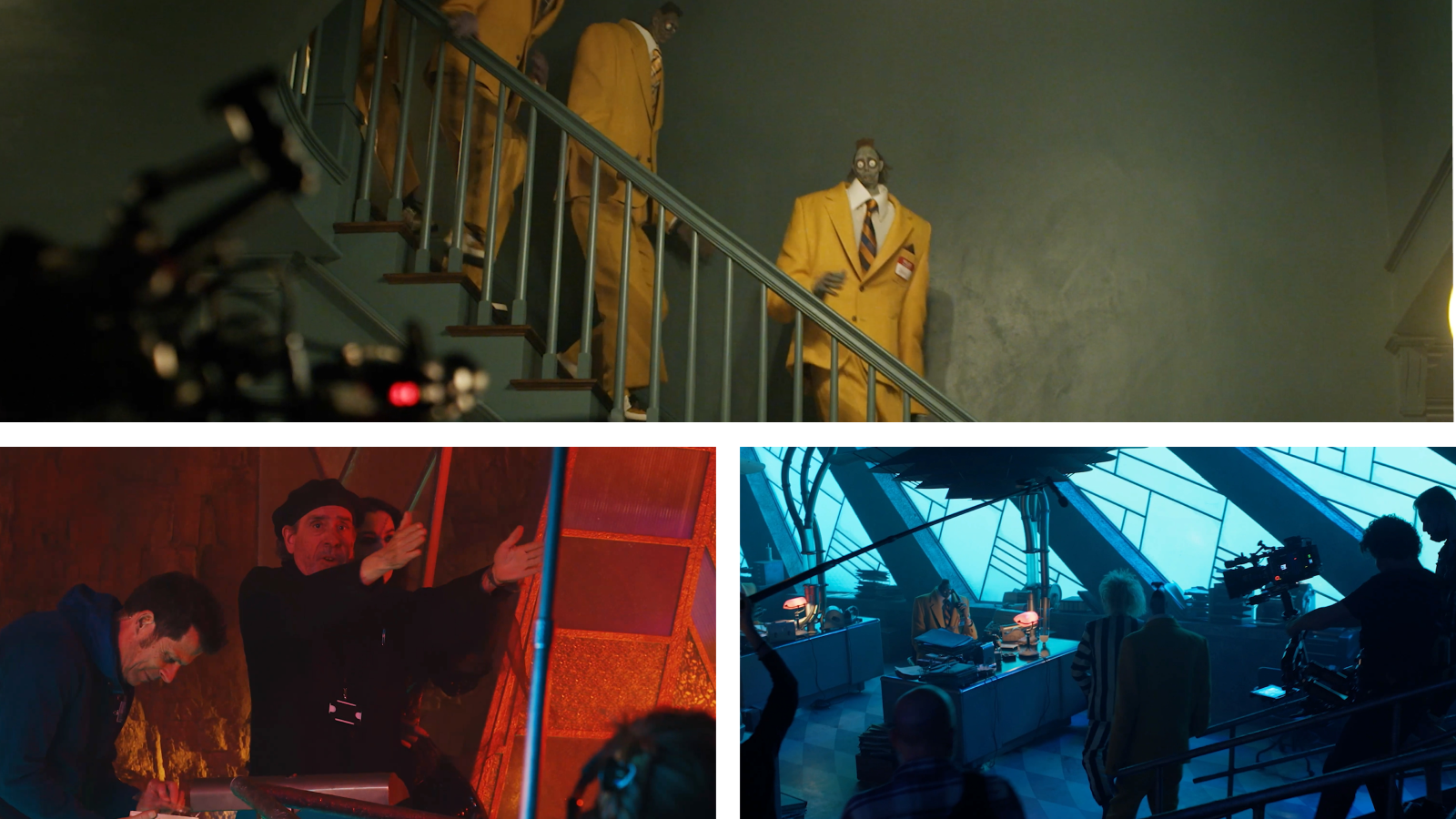
The Afterlife with Dual Base ISO
VENICE 2 has two different base ISO’s – 800 and 3200 – and for Beetlejuice Beetlejuice the ability to shoot at 3200 ISO with no loss of image quality really helped Haris to bring its strange Afterlife world to the big screen.
“Tim was certainly curious about a very high-speed sensor and the idea that we could shoot at 3200 ASA,” Haris comments. “He quickly and immediately saw the benefits of something like that, in particular in nuances of colour and candlelight in combination.”
Haris would make extensive use of shifting and rolling colours from LED lights, often blended with candlelight or ‘witches fingers.’
“You don’t know where it’s coming from, but it looks otherworldly,” Haris says about Witches Fingers. Supplied by the film’s special effects team, Witches Fingers are a gas-powered torch that provides a large bright flame.
“Oh my god, we’re really mixing it up,” Haris says, “and these sensors are quite receptive to that, and you don’t know quite why, but it just doesn’t look exactly like anything that he [Tim Burton] had seen or worked on to that extent, or in that particular combination [before].”

Experimental Effects
When you are trying to create new looks or styles, testing and experimentation are vitally important. For Beetlejuice Beetlejuice, Haris and the camera department performed many tests, experimenting with all kinds of different techniques, some making it into the film, some not.
“You’re constantly searching for new ways to create interesting images,” Haris says. “I was curious to see if in our flashback, where Beetlejuice meets Dolores his wife… …that was all set in this kind of gothic candlelight, what kind of infrared would be emitted by candles and by lighting the scene with only candles and shooting it in black and white infrared… so, I just did some tests and Tim really liked it.”
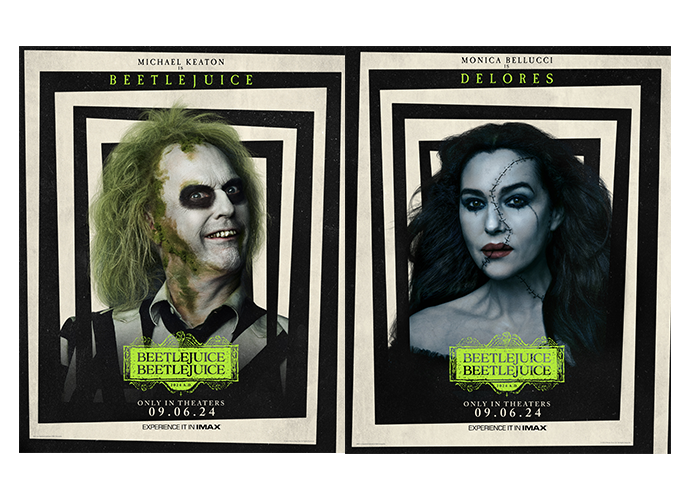
Haris had previously experimented with infrared using a modified Sony Alpha Camera, but for this film he and his crew worked with Sony and Panavision to adapt the VENICE 2 camera to shoot infrared. There is another scene at the beginning of the film where Lydia, played by Winona Ryder, is on her TV show Ghost House with Lydia Deetz. In this sequence, the audience sees what she sees as the spirits making troubles for the owners of a haunted house.
“It wasn’t scripted as infrared,” Haris says, “but I said to Tim, ‘Wouldn’t it be great if we shot it in green infrared and we get the eyes to dilate the way they do in those nature programs?’… so, we did a little test and he loved that”
And that’s how the scene appears in the film, shot in infrared.
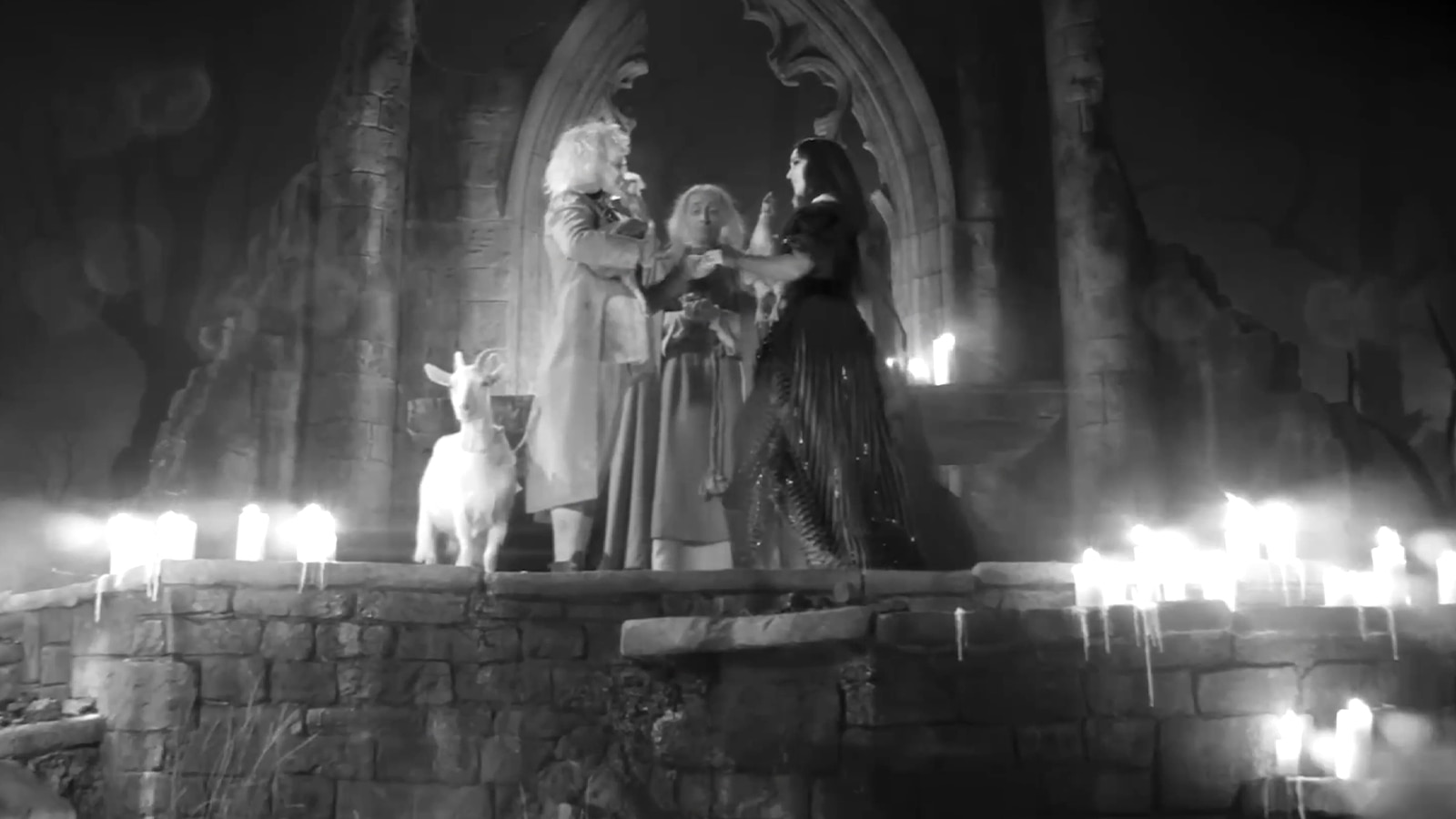
Biking with FX3
In one memorable sequence Astrid, played by Jenny Ortega, is frustrated with things going on in the family. She goes on a bike ride through Winter River, the picturesque town surrounding the original Deetz family home, and along the way something quite unexpected happens. Haris considered using Russian arms and other large and complex tracking equipment to track Ortega on her bike. But he felt it didn’t feel right for this film—he wanted a euphoric feel, an immersive feel. So, for this scene he chose to mount the FX3 on a small gimbal attached to her bike, as well as to an electric bike for tracking shots.
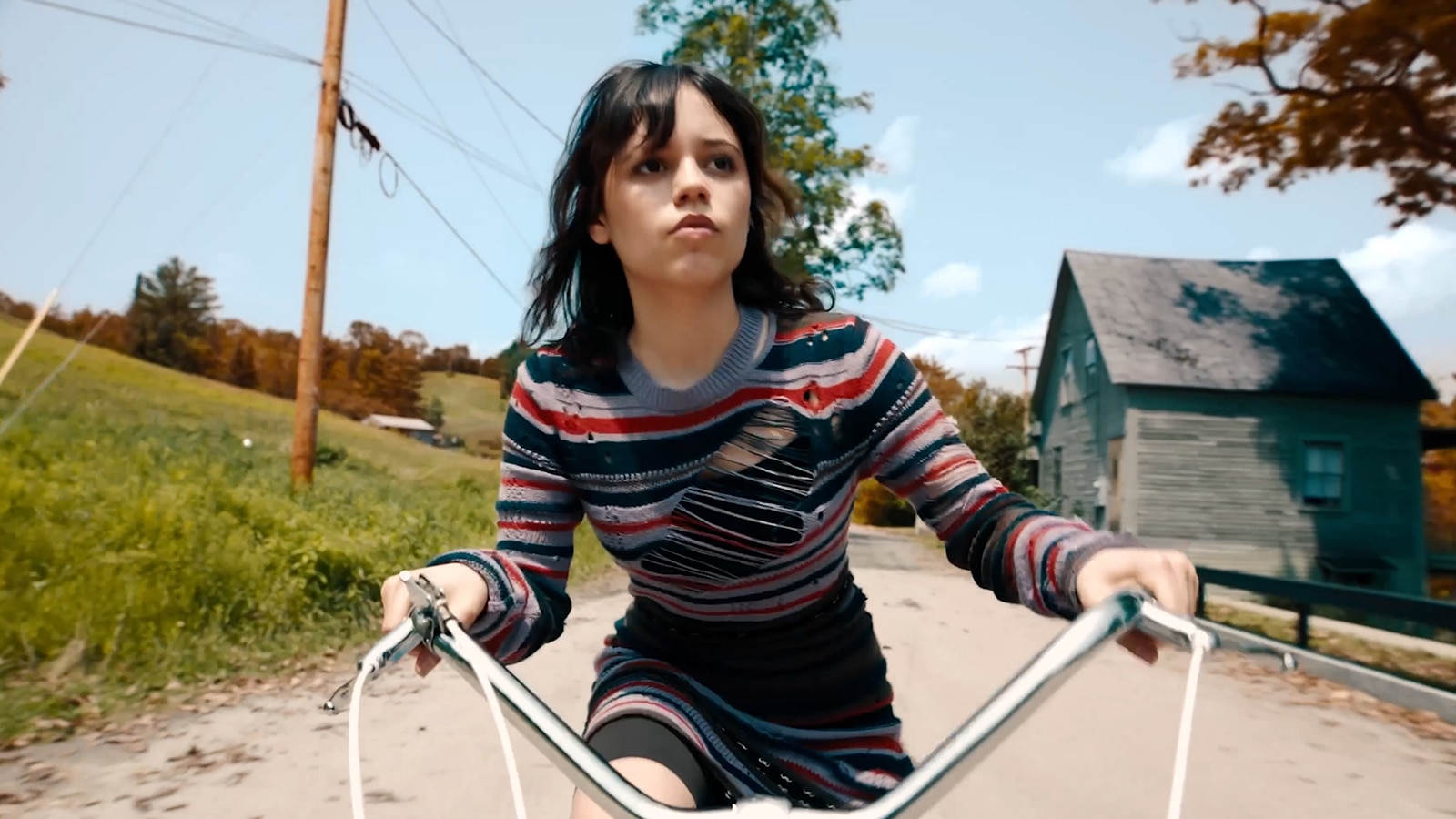
Testing with FX3
“I did some testing with the Sony FX3,” Haris says. “I was curious about using a smaller camera, a more mobile camera, and I thought there might be a place for it, particularly for the bicycle sequence.
“If the camera, which is the audience, is on this really large bit of equipment, there’s an attitude that’s gonna be in the image itself. It just felt to me a little freer, a little more punkish… to take a consumer camera this light. It just had that teenage rebellion thing for me in the equipment and that the technique would come through, and it would make it slightly more immersive.”
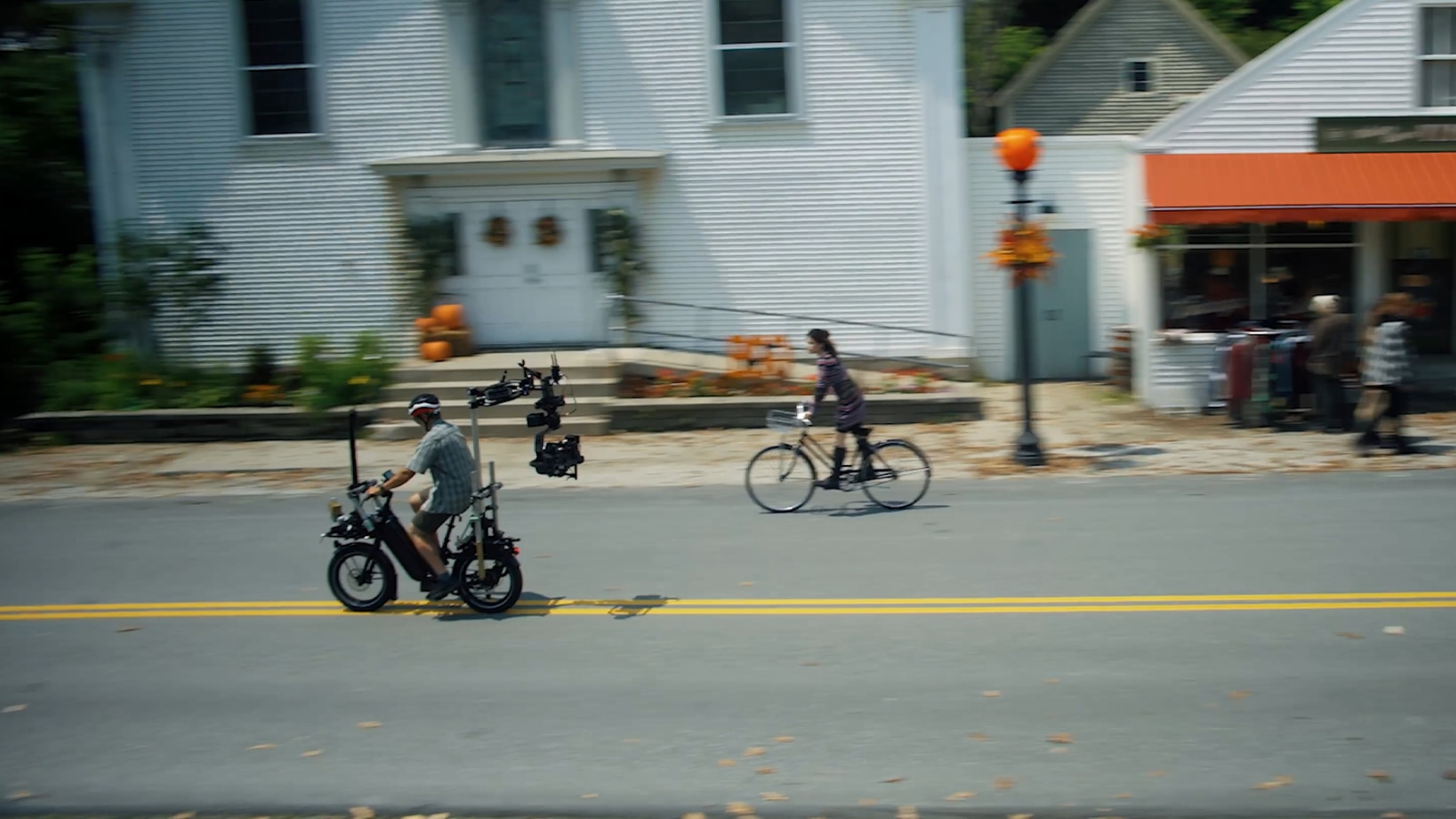
Haris was aware that while on paper the specs of the Sony FX3 are quite a bit lower than that of the Sony VENICE 2, but he felt that even though differences between the two were there, that the FX3 worked really well for these shots. Because both cameras have a very similar colour space, the differences weren’t objectionable.
“The colour space for the two cameras is very much from the same place,” Haris says, “and I’m very aware that I find that more obtrusive when it’s wrong than anything else, such as than pixel counts, etc.”
2024 has been an unpredictable year at the box office, but Tim Burton and Haris Zambarloukos’s creative vision opened to rave reviews and $111 million opening weekend at the US box office.
A Haunting in VENICE [2] with Haris Zambarloukos BSC GSC
Creators magazine offers insight into how filmmakers are using Sony products to help realise their creative vision.
